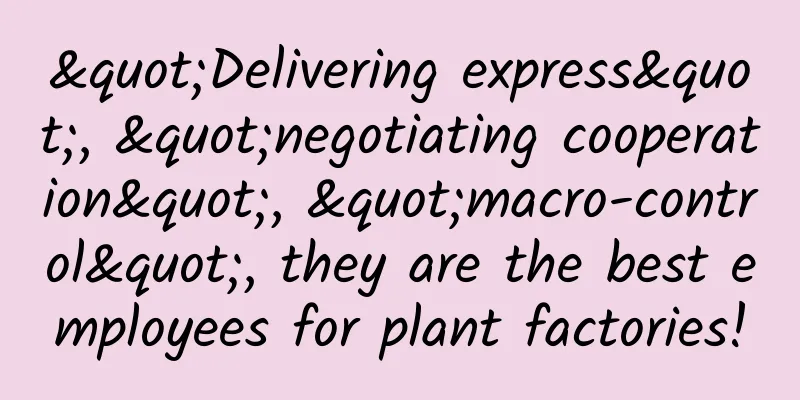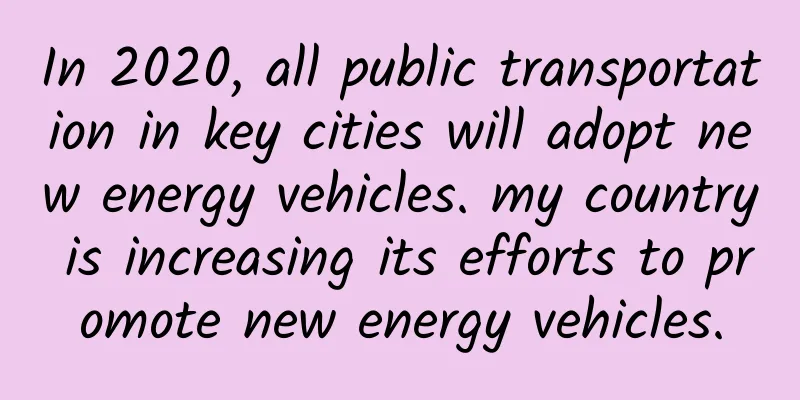"Delivering express", "negotiating cooperation", "macro-control", they are the best employees for plant factories!

|
Produced by: Science Popularization China Author: Liu Weigang, Jiang Hong, Zeng Fankui (Lanzhou Institute of Chemical Physics, Chinese Academy of Sciences) Producer: China Science Expo Editor's note: In order to unveil the mystery of scientific work, the China Science Popularization Frontier Science Project launched a series of articles called "Me and My Research", inviting scientists to write articles themselves, share their scientific research experiences, and create a scientific world. Let us follow the explorers at the forefront of science and technology and embark on a journey full of passion, challenges, and surprises. In organisms, cells are the basic units of life activities. Cells are like micro-factories that operate with precision, and their normal operation is inseparable from a continuous supply of energy. Sugars are like the "fuel" that powers these micro-factories, accurately and continuously injecting vigorous power into every delicate link of plant growth and development. So how do these "fuels" reach cells accurately? This has to mention a family of magical "sugar transporter" molecules in plants . They are carriers of sugar transport, responsible for the transport of different types of sugars, and play a vital role in the growth and development of plants. A deeper understanding of sugar transporters will not only enable us to uncover the mysteries of plant growth, but also have far-reaching implications for improving crop yields. The "sugar courier" in plants Imagine that plants are like busy factories, with leaves being the "green workshops" that convert carbon dioxide and water into sugars through photosynthesis, while other organs/tissues such as roots and seeds are the "clients" that need these sugars. Part of the sugar is consumed to maintain the growth and metabolism of the plant itself, while the other part is stored in the hands of the "clients" to form an "energy storage depot." Sugar transporters in plants (Image source: AI-assisted generation) Sugar transporters are like well-trained, agile professional couriers in factories . They are responsible for delivering sugar to the "demand department" of plants in an orderly, safe and efficient manner. Only by continuously providing energy and substances to plants can plants thrive. Sugar runs through every stage of plant life, from seed germination to flowering and fruiting, and all of them cannot be separated from the support of sugar. During seed development, sugar is converted into storage substances such as starch to reserve energy for the next generation's life journey. During the gestation of fruits, the accumulation of sugar also makes the fruits fuller. Photosynthesis in plants (Image source: AI-assisted generation) Generally speaking, there are three types of these "couriers": sugar final export transporters (SWEETs), sucrose transporters (SUTs/SUCs), and monosaccharide transporters (MSTs) . When sugar molecules approach sugar transporters outside or somewhere inside the cell, the "cargo slots" on the transporters will accurately identify and bind to specific sugar molecules. Therefore, sugar transporters have different "business expertise" and "equipment configurations", different working modes, and different functions. Sugar final export transporters are like couriers for special tasks. They have a unique structure, just like a carefully designed "molecular channel" embedded in the cell membrane of plant cells. They actively participate in plants' response to extreme environments such as drought, high temperature and low temperature, ensure that plants obtain enough energy during development, and activate their own defense response when facing pathogen infection. The sucrose transporter is like an efficient "sucrose special line" courier in the plant body, with one end closely connected to the leaves, the "production workshop" of photosynthesis. When the leaves synthesize sucrose, it quickly "takes the order" and loads the sucrose steadily on its unique "transport carrier" with extremely high efficiency and accuracy. It travels day and night along the complex "logistics network" in the plant body to various "demand sites" of the plant. Monosaccharide transporters are like dedicated "monosaccharide express" couriers in the plant body, shuttling quickly through the "streets and alleys" of cells in the complex plant tissue network, efficiently delivering monosaccharides to each cell "resident" who needs energy, meeting the various needs of the plant. These transporters each have unique functions and jointly participate in the transportation and distribution of sugars in the plant body. Not only are they "couriers", they are also a "magic weapon" for increasing crop yields These magical sugar transporters are not just simple "couriers", they are flexible and can accurately understand the changes in plant demand at various stages of growth. They can flexibly adjust the speed and direction of sugar transportation according to the needs of the plants . As a result, crops are able to fully absorb sugar, their root systems become well-developed, their branches become thick, their leaves become emerald green, their photosynthesis efficiency increases, and their growth trends significantly improve. In the end, crops not only grow stronger, but their yields also increase significantly. There are three main ways that sugar transporters increase crop yields: 1. Collaboration with symbiotic microorganisms; First of all, enhancing the interaction between sugar transporters and symbiotic microorganisms is one of the important strategies to increase crop yields . Mutualistic microorganisms are like a group of tiny but powerful "elves" who have formed a close and delicate symbiotic contract with plants. Mutualistic microorganisms can provide plants with more nutrients such as nitrogen, phosphorus, and potassium; plants provide microorganisms with more sugars, and the two benefit each other. Sugar transporters are like "supply vehicles" for mutualistic microorganisms, responsible for their energy supply. Through this strategy, plants can be helped to better absorb nutrients in the soil, such as phosphorus and nitrogen. It's like giving plants "nutritional supplements" to make them grow stronger. (Image source: provided by the research team) 2. Optimize photosynthesis; Secondly, photosynthesis is an important factor affecting plant growth and development. Photosynthesis is the "task publisher" of sugar transporters. The energy demand information it generates is like an order. Sugar transporters are like intelligent loading and unloading equipment at a busy port. They can quickly and accurately unload and transport "cargo" (sugar) to the destination, accelerating the transportation and allocation of sugar to meet the energy needs of all aspects of plant growth. By establishing a dynamic regulation model between photosynthesis and sugar transporters, the plant's utilization of light energy and distribution of sugar are optimized , which requires "recruiting" more sugar transporter couriers to work, speeding up the transportation of sugars, and allowing the energy conversion results of photosynthesis to circulate quickly in the body. (Image source: provided by the research team) 3. Genetic strategy; In addition, gene editing and other methods are also important means to increase crop yields. Gene editing is like a magical "life scalpel" and "genetic brush", which cleverly integrates gene fragments with special functions into the original sugar transporter gene blueprint of crops, so that the growth code of crops can be optimized and upgraded, and their yield potential can be fully utilized. This is just like providing more "energy drinks" to strongmen, they will become more powerful and energetic, and can help crops absorb more nutrients, thereby accelerating the growth rate and development process of crops. (Image source: provided by the research team) Strategies to increase crop yields (Image source: provided by the research team) Plants are the "guardians" of adversity The growth of plants is not always smooth, and they often face many extremely harsh adverse conditions such as drought, salinity, and low temperature, which bring huge challenges to the normal growth and development of plants. At this time, sugar transporters will adapt to the environment by regulating the metabolism and distribution of sugar in the body. They are like those brave "guardians", building an indestructible wall of steel, accurately and efficiently regulating the output and accumulation of sugar, and orderly transporting the sugar synthesized in the cell to various key parts, balancing the osmotic pressure inside and outside the cell, thereby protecting the stability and integrity of the cell membrane and helping plants overcome difficulties. For example, under drought stress conditions, some special sugar transporters are like creating a "water storage shield" for plants , accelerating sugar accumulation, increasing cell fluid concentration, enhancing the plant's ability to absorb water, and reducing water loss. Under saline-alkali stress conditions, specific sugar transporters are like putting on a set of "isolation protective clothing" for plants, regulating the distribution of sugar inside and outside cells, blocking excessive salt from entering cells, and reducing the toxicity of salt to cells. In a high temperature stress environment, this type of sugar transporter is like installing a "cooling fan" for the plant . By regulating sugar transport, it prompts the plant to activate specific physiological mechanisms, regulate body temperature, and avoid "heatstroke" due to high temperature. In a low temperature environment, the sugar content in plant cells will increase, just like putting on a "warm coat" for the cells, lowering the freezing point of the cell fluid and preventing the cells from being frostbitten. Therefore, sugar transporters ensure that the chemical reactions that sustain life in plant cells can continue to operate in adversity, allowing plants to maintain a good growth rhythm even in harsh environments. Intelligent "regulators" in plants Sugar transporters are also regulated by a variety of factors to ensure efficient and accurate sugar transport in plants. Each signal transduction pathway precisely regulates the function of sugar transporters, just like the "remote control" of the logistics network composed of sugar transporters, responsible for the dispatch of sugar transporters. Sugar transporters are like intelligent "regulators" in plants. From the moment the seeds germinate until the plant completes its entire life cycle, it silently plays a regulatory role, transporting different sugars to the various required parts of the plant, ensuring that the plant can efficiently use sugar resources and ensure the normal operation of life activities. It regulates the growth and development process of plants in an all-round way to protect the life activities of plants. The future is promising As the "sweet messenger" in the process of plant growth, sugar transporters play an important role in the life activities of plants. At present, our understanding of plant sugar transporters is just the tip of the iceberg. Looking to the future, with the development of gene sequencing and gene editing technology, more new discoveries and new results about sugar transporters will continue to emerge, showing a multi-dimensional development trend. These new discoveries and new results will not only further broaden our understanding of the mystery of the role of sugar transporters, but are also expected to lead us to create more breakthrough "sweet" solutions, and provide more solid theoretical guidance and technical support for cultivating crop varieties that adapt to extreme environments, enhancing the comprehensive stress resistance of crops, and promoting the efficient and stable development of agriculture. |
<<: Will a herpes zoster outbreak kill you? One method is the most effective in preventing it!
>>: Why is the wind so strong this year? Is it blowing everyone into the same hairstyle as Nezha?
Recommend
Infant noodles contain excessive aluminum and nitrate? Let me see what's going on!
Recently, third-party evaluations have been frequ...
Sharing the application skills of six carriers of private domain traffic!
When we talk about private domain traffic , we ge...
The ill-fated competition in Internet TV still depends on content
Last month, under the ban of the State Administra...
9 methods for selecting topics for short video operations, super comprehensive!
In short video creation, topic selection means th...
When OTT allows users to return to the big screen, how much do you know about its marketing value?
Nothing can stop OTT from becoming an indispensab...
How much does it cost to customize the Shihezi points mini program? What is the price quote for customizing Shihezi points app?
The factors affecting the quotation of Shihezi po...
Tips for niche channel search and promotion
For Shenma, a small search channel with relativel...
Essential information for APP promotion and operation: the most comprehensive and complete online event planning guidance program!
Event operation is an explosive operation method ...
Large salamander fossils discovered in Namibia, will the history of tetrapod evolution be rewritten?
Produced by: Science Popularization China Author:...
Deforestation could raise local temperatures by 4.5 degrees Celsius | COP26 Observation
Forests directly cool the planet and absorb carbo...
In-depth analysis of activity operations: post-launch operation plan
First look at this picture: I divided the operati...
Land→Ocean: How powerful are these hard-core “magic tools” that aid oil and gas exploration?
As early as the 11th century Shen Kuo, a scientis...
Find the perfect platform 8 APP testing solutions
Testing applications is very cumbersome. Where ca...
Why do most zodiac snakes not look like this? This is actually related to the third mathematical crisis...
Produced by: Science Popularization China Author:...
6 excellent copywriting strategies to teach you how to write sharp copy!
"One good copy is worth 100 sales experts.&q...









